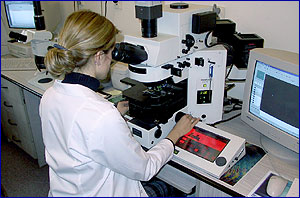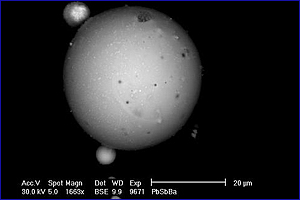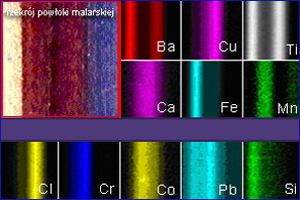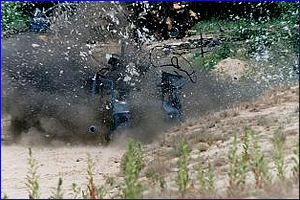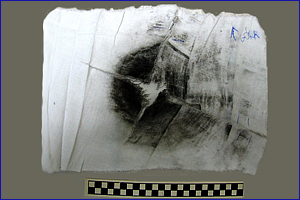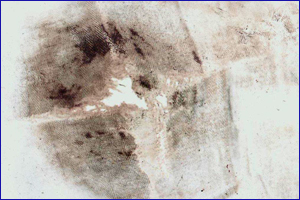General Chemistry Unit
In this Unit, most frequently performed casework concerns comparative examinations of the so-called microtraces and identification of other traces. Forensic examination involves also the determination of elemental composition of plant and synthetic drugs.
Experts of the Unit mainly conduct the analysis of the following:
- Microtraces (paint coats, fibres, glass, plastics, metals and alloys)
- Explosive materials and devices, flammables, irritants, alcohol;
- Gunshot residues (GSR);
- Various types of untypical substances.
|
Microscopic examination |
Selection of samples to be collected basing upon photo analysis |
Identification of the so-called microtraces is quite often problematic. Whereas it is not difficult to determine a car make basing on a vehicle appearance, examination of tiny fragments of paint coat, for instance, may pose a real challenge in the determination of car make. This is also a case when examination of fibres and many other traces is concern. Therefore, exhibit collection or electronic databases with physical and chemical properties of paint coats or fibres are utilised in experts’ work.
|
Characteristic lead, antimony and barium (Pb, Sb, Ba) containing particle |
XRF ED generated elemental distribution five-layer cross-section of paint coat |
General Chemistry Unit is equipped with stereo, comparison, and electron microscopes, to view samples under a high magnification. Additionally, expert work is assisted by a range of analytical equipment, such as spectrometers, spectrophotometers, chromatographers used for identification of chemical and elemental composition of examined samples.
Experts of the Unit take active part in various international undertakings, the most important being the participation in relevant ENFSI Expert Working Groups.
|
Electron microscope image of bulb coil |
Explosion in a vehicle |
Analysis of explosive materials and devices involves also the identification of variety of potentially explosive substances or objects, which are secured, for instance during search, as well as the reconstruction of devices used for a bomb attack, which is made on the basis of fragments collected at a bomb scene. During the examination, a chemical composition of explosive is determined in addition to its origin, construction and working mechanism, as well as potential threat to people. Occasionally, casework examination requires also the estimation of performance (range of explosion) of explosive material at a firing range, which makes this field of examination rather noisy, albeit spectacular.
|
Reference contact shot |
Result of colour reaction of lead with sodium sulfide |
As a result of the shot from firearm, a shooter and his or her surrounding area becomes contaminated with chemical transformation products originating from primer and cartridge propellant. Powder gas cloud contains also metallic particles coming from metals, a cartridge case, bullet and a barrel bore are made of. All these elements make up gunshot residues (GSR). In CFLP Institute, inorganic gunshot residues are analysed with chemigraphic methods in addition to scanning electron microscopes coupled with X-ray energy dispersion (SEM/EDX).
In favourable conditions, chemigraphy allows to determine a shooting distance, drawing on the density and distribution of gunshot residues around bullet point of entry area. Detection of GSR particles on a person’s hands or clothes indicates that the person was a shooter or stayed in the vicinity of a firing weapon. Whilst considering the results of GSR analysis and circumstances of an incident, the expert is able to determine which option was the case.

